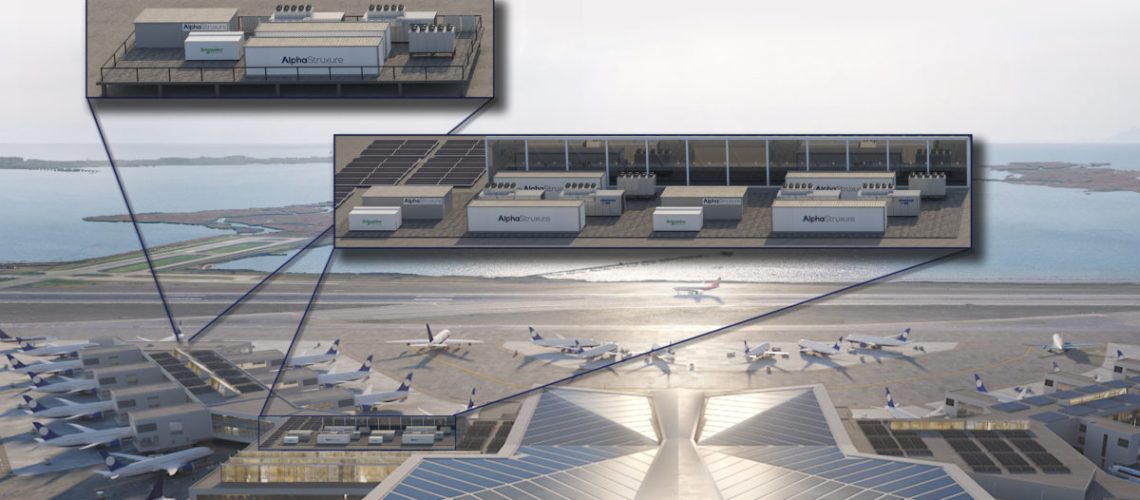The 11.34 MW microgrid, valued at $9.5 billion, is set to be the largest global project financing on record.
AlphaStruxure, a joint venture of Schneider Electric and Carlyle Group, announced it will design and install an 11.34 MW rooftop microgrid project on the New Terminal One of John F. Kennedy International Airport in Jamaica, N.Y.
Upon completion by 2026, the microgrid will feature the largest rooftop solar array in New York City, at 7.66 MW, also the largest PV array on any United States airport terminal, with all available and viable rooftop space on the new terminal used for solar panels. Electricity generated from the project is enough clean power for 3,570 average homes per year.
Besides solar generation, the New Terminal One Microgrid project will use 2 MW / 4 MWh of lithium-ion batteries and 3.68 MW of combined heat and power (renewable natural gas) and hydrogen fuel cells from Doosan/HyAxiom.
The microgrid system design consists of four power islands, with each island functioning as its own local, integrated energy system with sources of generation, storage, automation and controls.
The rooftop PV system will use over 13,000 solar panels, with enough clean power which is the equivalent of 1,039 homes per year. Juan Macias, chief executive officer of AlphaStruxure, said the renewable energy system will benefit local Queens borough residents by providing sustainable energy into the local Con Edison grid.
A spokesman for AlphaStruxure said module and PV inverter supplies have not yet been finalized for the large microgrid.
“We have installed more than 300 microgrids to date, and they’re at the cornerstone of energy deployments at airports,” said Annette Clayton, chief executive officer of Schneider Electric’s North American business.
The microgrid’s development is backed by a consortium that in addition to AlphaStruxure includes Carlyle, Ferrovial, JLC Infrastructure and Ullico, which are infrastructure fund investors. The distributed generation project is being built in partnership with the Port Authority of New York and New Jersey, the local authority which operates JFK.
Pooja Goyal, chief investment officer of Carlyle’s Global Infrastructure fund, said AlphaStruxure uses an energy-as-a-service subscription business model, while the JV developer shoulders all the upfront capital cost on its own, providing EPC design, financing, construction, operations and maintenance services for the airport microgrid project.
During a January 24 media event, Goyal and Macias said the airport microgrid’s $9.5 billion capital commitment is the largest global project financing transaction on record.
The developer has recently broken ground on the microgrid project and is currently entering the engineering phase, with construction anticipated to take place throughout 2024, with completion before 2026, Macias said during a January 24 virtual media event.
JFK’s new terminal facility is 2.4 million square feet and is estimated to create over 10,000 jobs. In lieu of the microgrid’s construction timeline, the first gates are expected to open in 2026, with completion of the terminal anticipated by 2030.
Based on climate change and the airport’s proximity to the Jamaica Bay waterway, all components of the microgrid will be installed on the terminal’s rooftop, while the microgrid will still interconnect with the local grid, providing about 90% of the electric demand of the terminal.
AlphaStruxure’s microgrid is designed to achieve New York State, City, and the Port Authority’s sustainability mandates, and will contribute towards the New York State Climate Leadership and Community Protection Act (CLCPA), which requires 70% of electricity from renewable sources by 2030 and 100% by 2040.



